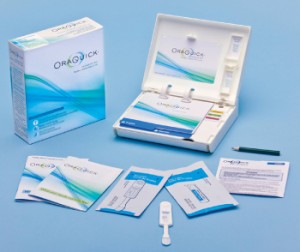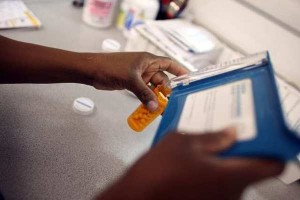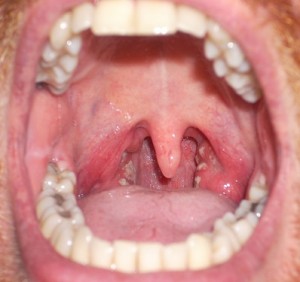The reason why many people don’t go get regular HIV and Sexually Transmitted Infection (STI) testing is because they are embarrassed to talk to their healthcare practitioner (HCP) that they have a relationship with, and get nervous to go to STD clinics because they are worried about stigma if they see anyone they know. One way to break that stigma? the new OraQuick at home HIV testing kit. It only takes about 20 minutes to get results, and has everything that you need to test yourself for HIV-1 and HIV-2 (the two main strains of HIV). Of course, if you are at high risk for STI’s and have symptoms, you should still go and get a full HIV and STI panel of testing with physical assessment by your HCP. But it is fast, efficient HIV testing in the comfort of your own home; but how it works might be confusing.
 How does the at-home test work?
How does the at-home test work?
This OraQuick HIV test is the only FDA approved at home HIV testing kit currently on the market. The kit comes with very easy to read and specific directions, but the test itself does not require any blood, so you do not need to poke or prick yourself to draw blood. It uses the fluid and cells from your gums to test for the HIV antibodies; you just need to use the swab that is included in the kit, rub it over your upper and lower gums, then put it in a little test tube of fluid (provided). That will test the cells and fluid of your gums for the HIV antibody and you will have your results in 20 minutes. The results read in a similar fashion to a pregnancy test, there is always one line that should show, once you start the test, which is the control line, to let you know that the test is working properly. If both lines illuminate, then you are positive. Of course positive results do need to be sent to a lab for a further test and you need to have them confirmed by an HCP, just to ensure that the test is correct. They offer 24/7 support online, along with videos on how to perform the test and interpret the results directly on their website.
Where can I get the test?
You can buy the OraQuick at any local pharmacy here in the US (CVS, Walgreens, Wal-Mart, Kroger, Rite Aid, and Navarro.) And you can also check out the OraQuick website to purchase the test directly from them. The tests cost $39.99 USD per test and are good for one sample.
The bottom line?
If you are specifically in need of HIV screening/testing, this is a great option for those without an HCP or if you cannot get into a clinic for testing. That being said, if you are at risk for HIV, you are most likely at risk for other STI’s and I do suggest getting checked out by an HCP so they can physically assess you and test for a whole array of STI’s that you may or may not be aware that you are at risk for. HIV is just one of many Sexually Transmitted Infections, so please know your risks, cut those risks by using condoms, or other barrier methods, to prevent the spread of infection. So be safe, choose your partners wisely, and get tested frequently.
Yours in Good Health
B


